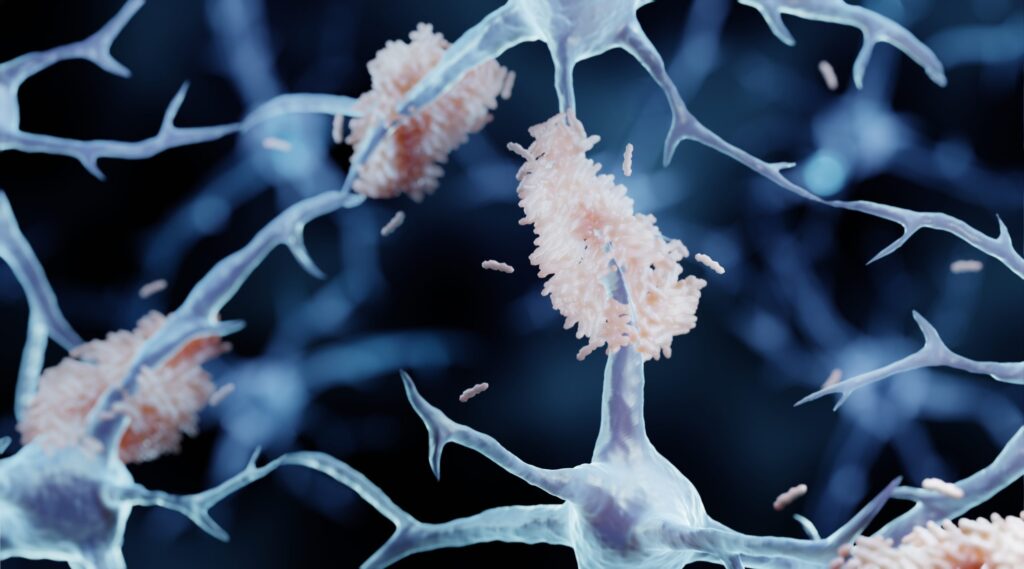
For decades, Alzheimer’s research has been dominated by the focus on amyloid-beta and tau amyloids—proteins known to form sticky plaques that kill neurons and impair brain function. However, a groundbreaking study from Johns Hopkins University suggests that these notorious culprits might not be acting alone. Researchers have identified over 200 types of misfolded proteins potentially linked to age-related cognitive decline, using an advanced structural proteomic technology called limited proteolysis mass spectrometry (LiP-MS).
This innovative study, conducted on rats, reveals that these misfolded proteins could serve as new therapeutic targets for treating Alzheimer’s disease and other forms of dementia in humans over 65. “Amyloids are the buildup of misshapen proteins,” explained Dr. Stephen Fried, the study’s lead researcher. “They’re big and ugly and easy to see under the microscope, so it makes sense that they catch our attention. But we’re seeing hundreds of proteins misfolding in ways that don’t clump together in an amyloid and yet still seem to impact how the brain functions. Our research is showing that amyloids are just the tip of the iceberg.”
Expanding the Horizon of Alzheimer’s Research
The findings, published in Science Advances, could revolutionize the understanding of cognitive decline, which the researchers describe as “a major societal burden” affecting an aging population. The study involved 17 two-year-old rats, with seven showing signs of cognitive impairment and ten performing comparably to younger rats. By examining over 2,500 protein types in the hippocampus, the researchers identified more than 200 proteins that were misfolded in the impaired rats but not in their healthy counterparts.
According to the team, these misfolded proteins could be contributing to cognitive decline. “A number of these proteins have been implicated in memory, aging, and synaptic health, whereas many others represent previously unexplored targets for further study or therapeutics,” they noted. The study further highlighted that these proteins are generally nonrefoldable, meaning they cannot return to their original shapes after being deformed.
Unveiling New Avenues for Treatment
Historically, research on neurodegenerative diseases has concentrated on proteins that form amyloids or insoluble aggregates. However, this study suggests that many misfolded proteins, which do not form such aggregates, might still play a significant role in disease progression. “We think there are a lot of proteins that can be misfolded, not form amyloids, and still be problematic,” Fried stated. “And that suggests these misfolded proteins have ways of escaping this surveillance system in the cell.”
The natural surveillance system in cells is designed to identify and destroy malfunctioning proteins. Yet, the study raises questions about how these misfolded proteins evade detection. The researchers plan to use high-resolution microscopy to better understand the molecular deformities of these proteins, which could lead to more effective treatments and preventive measures for cognitive decline.
Implications for Future Research and Treatment
Understanding the molecular underpinnings of cognitive decline could transform the approach to treating Alzheimer’s and related disorders. “A lot of us have experienced a loved one or a relative who has become less capable of doing those everyday tasks that require cognitive abilities,” Fried remarked. “Understanding what’s physically going on in the brain could lead to better treatments and preventive measures.”
The study concludes with a call for further research into the structural changes of these proteins, which could potentially be developed into therapeutic targets or early disease biomarkers. “To summarize, we have found that structural proteomics is an emerging ‘omics’ method that is particularly relevant for dissecting the features associated with progressive age-related cognition loss,” the team wrote. “Further mechanistic and structural studies on specific CASC proteins could promote some of the proteins disclosed here to be considered therapeutic targets or early disease biomarkers.”
This development represents a significant shift in Alzheimer’s research, opening new pathways for understanding and potentially mitigating the effects of this debilitating disease.







